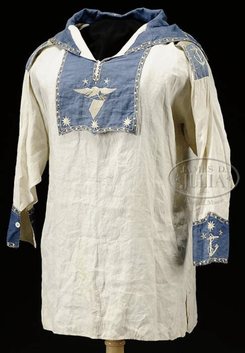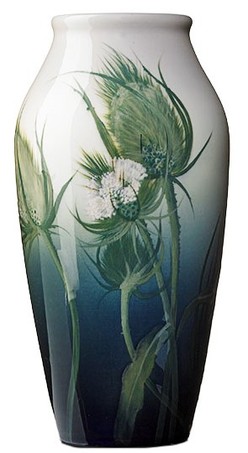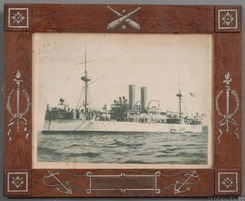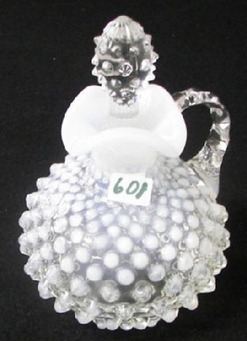 Winter passes slowly. We count the days, watch the shifting sea of snow outside the windows, and try to occupy our time, but whenever I start to be really weary, I try to remind myself that it could be worse: I could be on an 18th-century whaler. Whaling voyages lasted years and the only thing that could possibly be more unchanging than a snowy Ohio cornfield would be an endless vista of water. So it’s no surprise that sailors found a number of small, intricate projects to occupy their time.
Winter passes slowly. We count the days, watch the shifting sea of snow outside the windows, and try to occupy our time, but whenever I start to be really weary, I try to remind myself that it could be worse: I could be on an 18th-century whaler. Whaling voyages lasted years and the only thing that could possibly be more unchanging than a snowy Ohio cornfield would be an endless vista of water. So it’s no surprise that sailors found a number of small, intricate projects to occupy their time.
As we highlighted a few weeks ago, sailors often worked on scrimshaw pieces, carving scenes in teeth or pieces of baleen, and fashioned small objects like pie crimpers or jagging wheels. (At one time, it was thought that sailors made these “sailor’s valentines,” but research in more recent decades indicates that they were likely made in the Caribbean, Barbados specifically, and sold to sailors as keepsakes.) While modern depictions of sailors in centuries past are often of rough, pirate-esque men, the objects they left behind frequently reveal finer, more delicate skills, but perhaps few more so than this recent offering at auction, a sailor’s shirt or jumper with intricate embroidery, work that would far more likely be attributed to a woman in any other setting. In reality however, sailors did a great deal of sewing (a great deal of all manner of domestic work, in fact), spending their hours repairing sails and ropes, as well as their own clothing. So it’s not difficult to imagine the detailed embroidery on this piece being the work of a sailor as well, a sailor who, the American flag and eagle would seem imply, served in the United States Navy. Few such pieces are known to exist aside from objects in the collection of the Winterthur Museum and the Smithsonian, although there are a few extant images, including this one which has collar and cuffs tinted blue, showing sailors in shirts of similar style.


![Furniture: Highboy; Queen Anne, Maple & Pine, Rob Davis, signed, 2-Part, Japanned. A rare Queen Anne japanned maple and pine [highboy or] high chest of drawers, signed "Rob Davis" in script, Boston, Massachusetts, 1735-1739.](http://www.prices4antiques.com/item_images/medium/21/51/88-1.jpg)




